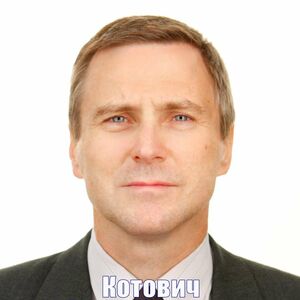Диссертация (1152392), страница 24
Текст из файла (страница 24)
– 2006. – №2. – №.16-30.15983.Феофанов К.А. Социально-политические и ценностно-ментальныеособенности российского управления [Текст] / К. А. Феофанов //Социально-гуманитарные знания. – 2007. – №2. – С.88-102.84.Хачатуров А. Е. Применимы ли в России традиции и опытвосточной школы менеджмента // Менеджмент в России и за рубежом. –2005. – № 1. – С.124–134.85.Чанько А. Д.
Опыт диагностики организационной культурыроссийских компаний // Российский журнал менеджмента. – 2005. – № 4. –С.29-54.86.Шейн Э. Организационная культура и лидерство. 3-е изд. / Пер. сангл. под ред. Т.Ю. Ковалевой. – СПб.: Питер, 2007. – 336с.: ил. – (Серия«Классика МВА»).87.Щуров В.А., Комиссаров А.В. Введение в классическую теориюкорпоративной культуры // Вестник Нижегородского университета им.Н.И. Лобачевского.
Серия Социальные науки. – 2010. – № 2 (18). – С.106112.Издания на английском языке88.Adizes I. Corporate Lifecycles: How and Why Corporations Grow andDie and What to Do about It. Englewood Cliffs. N.J.: Prentice Hall, 1990. –384p.89.Adler, N.J. International Dimensions of Oganizational Behavior (2nded.). Boston, MA: PWS-KENT Publishing Company, 1991. – pp.63-91.90.Analysis: «Vietnam Airlines» report 31 October 2014. BIDV SecuritiesCompany (BSC).91.Baba Hafiz, Jamal Abdul Nassir Shaari. Confirmatory factor analysis(CFA) of first order factor measurement model-ICT empowerment in Nigeria /International Journal of Business Management and Administration, may 2013. –Vol. 2(5).
– pp.81-88.16092.Bligh M. C., “Surviving Post-Merger ‘Culture Clash’: Can CulturalLeadership Lessen the Casualties?” Leadership, 2006. – Vol.2 (4). – pp.395-426.93.Cameron, K.S. & Whetten, D.A. Organisation effectiveness. Acomparison of multiple models. New York: Academic Press, 1983. – 291p.94.Cameron, K.S. A process for changing organizational culture.” InThomas G.
Cummings (Ed.) Handbook of Organizational Development,Thousand Oaks, CA: Sage, 2008. – pp.429-445.95.Cronbach, L. J.. Coefficient alpha and the internal structure of tests /Psychometrika, september 1951. – Vol. 16. – pp.297-334.96.Cross E.Y. “Managing Diversity: A Continuous Process of Change”,The Diversity Factor; Summer 2010. – Vol.
18. – Issue 2. – pp.1-4.97.Daniel P. Modaff, Sue DeWine. Organizational communication:foundations, challenges, misunderstandings. Roxbury Publishing Company.Oxford University Press, 2002. – 266p.98.Danneels E. Trying to become a different type of company: Dynamiccapability at Smith Corona // Strategic Management Journal, 2011. – Vol. 32(1).– pp.1–31.99.De Camera D., Renjen P. “The Secret of successful Merger: Dispatchesfrom the Front Lines,” The Journal of Business Strategy, 2004.
– Vol. 25(3). –pp.10-14.100.Denison D.R. Bringing corporate culture to the bottom line.Organizational Dynamics, 1984. – Vol. 13(2). – pp.4-22.101.Denison D.R. Corporate culture and organizational effectiveness. NewYork: John Wiley & Sons, 1990. – 267p.102.Elkington J. The Chrysalis Economy. How Citizen CEOs andCorporation Can Fuse Values and Value Creation, Capstone, Oxford, 2001. –284p.103.Gold K.A.
Managing for Success: A comparison of the private andpublic sectors // Public Administration Review, 1982. – Vol. 42. – No 6. Nov.Dec. – pp.568-575.161104.Gordon G.G., and N. DiTomaso. Predicting corporate performance fromorganizational culture // Journal of Management Studies, 1992. – Vol. 29. –pp.783-799.105.Gordon, R. A., & Howell, J. E. Higher education for business. NewYork, NY: Columbia University Press, 1959.
– 491p.106.Greiner L. Evolution and revolution as organizations grow // HarvardBusiness Review, 1972. – Vol. 50. – No 4. – pp.37-46.107.Harris P.R., and Moran R.T. Managing Cultural Differences: LeadershipStrategies for a New World of Business, 5th ed., Houston, TX: Gulf ProfessionalPublishing Company, 2000. – 402p.108.Hendon D.W., Hendon R.A., and Herbig P. Cross-Cultural BusinessNegotiation. Westport, CT: Praeger Paperback, 1999. – 272p.109.Herrmann, P. (2005). Evolution of strategic management: the need fornew dominant designs // International Journal of Management Reviews, 2005.
–Vol. 7(2) . – pp.111–130.110.Hofstede G. Cultures and Organizations: Software of the Mind:Intercultural Cooperation and its Importance for Survival. New York, McGrawHill, 1991. – 434p.111.Hofstede G., Neuijen B., Ohayv D.D., Sanders G. MeasuringOrganizational Cultures: A Qualitative and Quantitative Study Across TwentyCases / Administrative Science Quarterly, 1990. – Vol. 35. – pp.286-316.112.Hooijberg, R., and F. Petrock, “On Cultural Change: Using theCompeting Values Framework to Help Leaders Execute a TransformationalStrategy,” Human Resource Management, 32:1 (1993). – pp.29-50.113.House R., Javidan M., Hanges P., Dorfman P. “Understanding culturesand implicit leadership theories across the globe,” J.World Bus, 2002. –Vol.
37 (5). – pp.57-63.114.Ingram P., Rao H., & Silverman B.S. History in strategy research: What,why, and how? // Advances in strategic management, 2012. – Vol. 29. – pp.241–273. Bingley, UK: Emerald Group.162115.Jain Mathew, Tomy K. Kallarakal, Uma Selvi and Kennedy AndrewThomas. An Empirical Study on the Organizational Climate of InformationTechnology Industry in India.
Journal of Business and Policy Research, 2011. –Vol. 6. – No 2. – pp.136-152.116.Kipping M. & Westerhuis G. Strategy, ideology, and structure: Thepolitical processes & introducing the M-form in the Dutch banks // Advances instrategic management, 2012. – Vol. 29. – pp.187–237. Bingley, UK: EmeraldGroup.117.Kohtamäki M., Kraus S., Kautonen T. & Varamäki E. Strategy in Small-Sized Growth Firms in Finland: A Discourse Analysis Approach // InternationalJournal of Entrepreneurship and Innovation, 2008.
– Vol. 9(3) . – pp.1-10.118.Kotter J.P. & Heskett J.L. Corporate Culture and Performance. NewYork: The Free Press, 1992. – 214p.119.Kraus S., Harms R., & Schwarz E. J. Strategic planning in smallerenterprises // New empirical findings. Management Research News, 2006. –Vol. 29(6) . – pp.334-344.120.Kulapov M., Ponomarev M., Labadzhyan M. Corporate culture as amanagement tool: the case of Russian telecom companies // ContemporaryViews on Business: Developing Business Excellence // Hameenlinna, Finland,5-7 october 2011.
– pp.119-125.121.Kundu K. Development of the conceptual framework of organizationalclimate, Vidyasagar University Journal of Commerce, 2007. – Vol. 12. –pp.100-108.122.Mallak L.A., D.M. Lyth, S.D. Olson, S.M. Ulshafer, and F.J. Sardone,“Diagnosing Culture in Healthcare Organizations Using Critical Incidents,” TheInternational Journal of Health Care Quality Assurance, 16:4 (2003a).
– pp.180190.123.Mallak L.A., D.M. Lyth, S.D. Olson, S.M. Ulshafer, and F.J. Sardone,“Culture, the Built Environment, and Healthcare Organizational Performance,”Managing Service Quality, 13:1 (2003b). – pp.27-38.163124.Marcus Matthias Keupp, Maximilian Palmié and Oliver Gassmann. Thestrategic management of innovation: a systematic review and paths for futureresearch // International Journal of Management Reviews, 2012.
– Vol. 14(4) . –pp.367-390.125.Martin J., and Siehl C. Organizational culture and counter culture: Anuneasy symbiosis //Organizational Dynamics, 1983. – Vol. 12. – pp.52-64.126.McKenna C. Strategy followed structure: Management consulting andthe creation of a market for ‘‘strategy’’, 1950–2000 // Advances in strategicmanagement, 2012. – Vol. 29. – pp.153–186. Bingley, UK: Emerald Group.127.Meyer G. D., Neck H. M. & Meeks M. D. The Entrepreneurship-Strategic Management Interface // Strategic entrepreneurship: Creating a newmindset, 2002. – pp.19-44.
Oxford: Blackwell.128.Miller C.C. & Ireland R.D. Intuition in strategic decision making: friendor foe in the fastpaced 21st century? // Academy of Management Executive,2005. – Vol. 19(1) . – pp.19-30.129.Olivier Furrer, Howard Thomas and Anna Goussevskaia. The structureand evolution of the strategic management field: A content analysis of 26 yearsof strategic management research // International Journal of ManagementReviews, 2008. – Vol. 10.
– Issue 1. – pp.1–23.130.Ouchi W. Theory "Z": How American business can meet the Japanesechallenge. - Reading, MA: Addison-Wesley, 1981. – 283p.131.Quinn R.E. Beyond rational management. San Francisco: Jossey-Bass,1988. – 199p.132.Research report VPBank Securities Co. Ltd. 2015.133.Roethlisberger, F.J. & Dickson, W.J. Management and the worker.Anaccount of a research programme conducted by Western Electric Company,Hawthorne Works Chicago.
Cambridge: Harvard University Press, 1975. –613p.164134.Ronel Erwee, Bernadette Lynch, Bruce Millett, Don Smith, GertRoodt.Cross-cultural equivalence of the organisational culture survey in Australia //Journal of Industrial Psychology, 2001. – Vol. 27(3). – pp.7-12.135.Rousseau D.M.
Assessing organizational culture: the case for multiplemethods. In B. Schneider (ed.) // Organizational Climate and Culture. SanFrancisco: Jossey-Bass, 1990. – pp.153-192.136.Schein Edgar H. Organizational culture. American Psychologist, 1990. –Vol.
45. – No 2. – pp.109-119.137.Shamil Naoum. People and Organizational Management in Construction.Thomas Telford, 2001. – 298p.138.Shimizu K., Hitt M.A., Vaidyanath D. and Pisano V. “Theoreticalfoundations of cross-border mergers and acquisitions: A review of currentresearch and recommendations for the future” // Journal of InternationalManagement, 2004. – Vol.
10. – pp.307-353.139.Teece D.J. Explicating dynamic capabilities: The nature andmicrofoundationsof(sustainable)enterpriseperformance//StrategicManagement Journal, 2007. – Vol. 28. – pp.1319-1350.140.Terziovski M. Innovation practice and its performance implications insmall and medium enterprises (SMEs) in the manufacturing sector: A resourcebased view // Strategic Management Journal, 2010. – Vol.
31. – pp.892-902.141.Thorpe R., Holt R., Macpherson A. and Pittaway L. Using knowledgewithin small and medium-sized firms: A systematic review of the evidence //International Journal of Management Reviews, 2005. – Vol. 7. – pp.257-281.142.Uotila J., Maula M., Keil T. and Zahra S.A. Exploration, exploitation,and financial performance: Analysis of S&P 500 corporations // StrategicManagement Journal, 2009. – Vol. 30. – pp.221-231.143.Waterman, R. Jr., Peters, T. and Phillips, J.R. // Structure Is NotOrganisation. – Business Horizons, 1980.
















